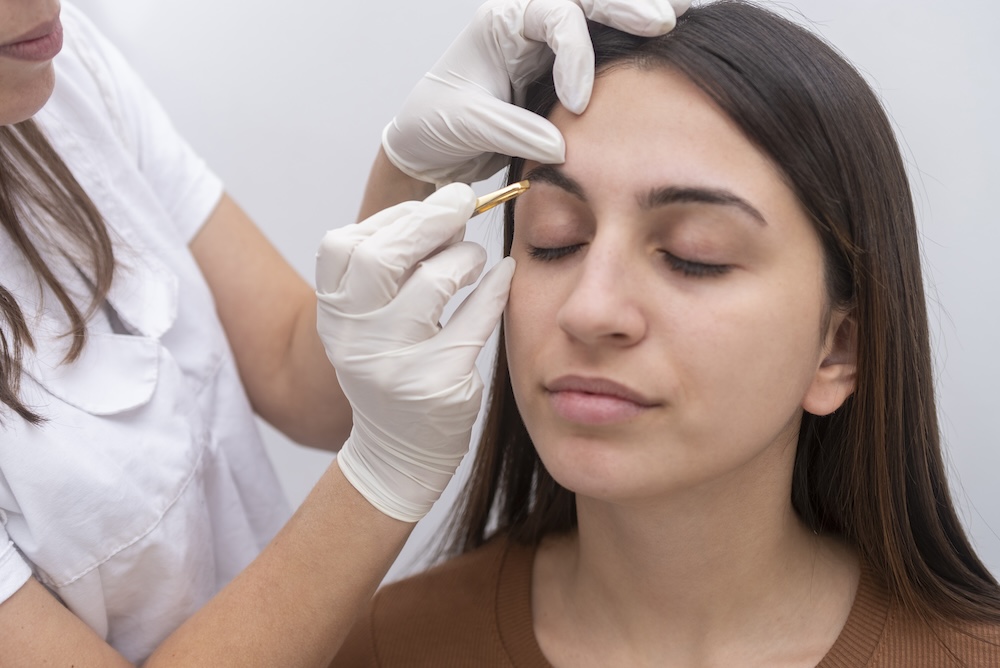
If you think your ears are too big, too small, too oddly shaped, or something else that doesn’t make you happy, an otoplasty could be the answer to your problem.
Not everyone is happy with their ears. They may be too big or too small, protrude more than normal from the head, or be disproportionate to your other facial features. Whatever the reason, an otoplasty, a cosmetic surgery procedure, can refashion your ears to your satisfaction.
At 817 Surgical Arts, triple-board-certified facial plastic and cosmetic surgeon Dr. Emily Johnson performs otoplasty procedures for our patients in the Fort Worth, Texas area who are unhappy or embarrassed by their ears. What is involved and what makes for a good candidate? Keep reading to learn the answers.
Otoplasty Basics
Otoplasty is surgery performed on the visible portion of the outer ear, known as the auricle. The auricle is made of cartilage folds covered in skin. It begins developing while the fetus is still in the womb and continues to develop for about five years after birth.
Otoplasty comes in several forms:
Ear augmentation
If your ears are very small or haven’t completely developed, you may want to have otoplasty to increase the size of your outer ear to better fit your other features.
Ear pinning
If your ears stick out prominently from the sides of the head, you may want to have otoplasty to pin your ears back closer to your head.
Ear reduction
If your ears are larger than normal, called macrotia, you may want to have otoplasty to reduce their size.
Otoplasty can also create a more “normal” shape if your ears are in some way deformed, either from an injury or a congenital defect.
Am I a good candidate for otoplasty?
You’re a good candidate for otoplasty if you:
- Are age 5 or older: at this age, the auricle has reached 90% of its adult size
- Are in good overall health: an underlying condition can impair healing or increase the risk of complications
- Don’t smoke: smoking decreases blood flow to the area, slowing healing
- Have realistic expectations: it’s important you understand what the procedure can and can’t do
Dr. Johnson goes over your medical history, performs an exam, and answers all your questions at your initial consultation to ensure you’re a good candidate.
The otoplasty procedure and recovery
Otoplasty is an outpatient surgery that takes 1-3 hours, depending on the exact nature and complexity of the procedure. We use a local anesthetic with a sedative for adults and older children. However, we recommend general anesthesia for young children.
The specific technique depends on the type of otoplasty you’re having, but, generally speaking, Dr. Johnson first makes an incision either on the back or inside the folds of your ear. Next, she manipulates the ear tissue, which may include removing cartilage or skin, folding and shaping the cartilage with stitches, or grafting new cartilage onto the ear. Finally, she closes the incision with stitches.
During the healing process, you may experience redness, swelling, and bruising, but these are normal. You’ll have to avoid certain things, too:
- Sleeping on your side
- Placing pressure on your ears
- Rubbing your ears
- Scrubbing your ears while in the bath
- Doing strenuous activity until Dr. Johnson gives you permission
Wear clothing like button-down shirts so you don’t have to pull anything over your head. You’ll also likely need to wear a loose headband that covers your ears at night for 4-6 weeks. At that point, your ears will be healed, and you can show them off to the world.
Self-conscious about your ears? Otoplasty may be the answer. To learn more, or to schedule a consultation with Dr. Johnson, call 817 Surgical Arts at 817-241-5375, or book online with us today.


